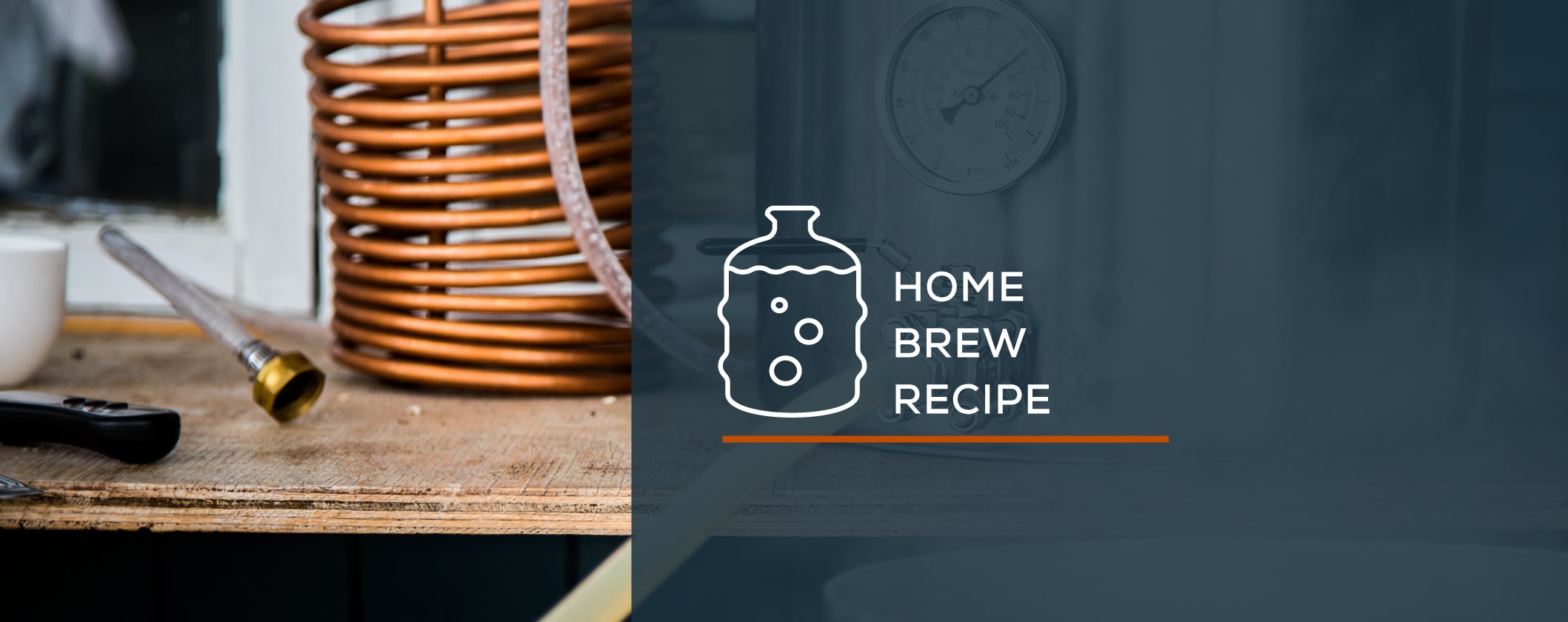2035-PC American Lager | Gordon Strong’s Pre-Prohibition Lager

Private Collection Recipe
2022 Q1 Frosted Lagers
This recipe is a modern take on the Pre-Prohibition Lager style and has been masterfully crafted by Gordon Strong, author of the Beer Judge Certification Program style guidelines. Strong’s yeast strain of choice for this brew is Wyeast 2035-PC American Lager, but he suggests any American, German, or Czech lager yeast will do. We couldn’t think of a better recipe pairing for our Frosted Lagers Private Collection release featuring strains originating from each of these eminent brewing hubs.
Originally appeared in the January/February 2022 issue of Brew Your Own magazine. Re-used with permission.
Login to your BYO account or sign up to read the full article!
All-Grain Recipe
5 gallon batch (19 L, all-grain)
Original Gravity: 1.053
Final Gravity: 1.012
IBU: 32
SRM: 3
ABV: 5.4%
Fermentables
7.75 lbs (3.5 kg) Pilsner malt
8 oz (227 g) Munich malt
2.5 lbs (1.1 kg) flaked maize
Hops
2 AAU Hallertauer hops (first wort hops) (0.5 oz/14 g at 4% alpha acids)
6.5 AAU Magnum hops (60 min.) (0.5 oz/14g at 13% alpha acids)
2 AAU Hallertauer hops (10 min.) (0.5 oz/14 g at 4% alpha acids)
1 oz (28 g) Hallertauer hops (2 min.)
Yeast
2 Activators™ Wyeast 2035-PC American Lager,
Wyeast 2002-PC Gambrinus Style Lager, or
Wyeast 2352-PC Munich Lager II
You can also make a starter with 1 Activator™
Other Ingredients
¾ cup corn sugar (if priming)
Step by Step Directions
- This recipe uses reverse osmosis (RO) water. Adjust all brewing water to a pH of 5.5 using phosphoric acid. Add 1 tsp. of calcium chloride to the mash for mouthfeel.
- This recipe uses a step mash. Use enough water to have a moderately thick mash (1.5 qts./lb or 3.1 L/kg). Mash in the malts and corn at 131 °F (55 °C) and hold for 15 minutes. Raise the temperature to 145 °F (63 °C) and hold for 45 minutes. Raise the temperature to 158 °F (70 °C) and hold for 15 minutes. Begin recirculating, raise the mash temperature to 169 °F (76 °C), and recirculate for 15 minutes.
- Put the first wort hops in the boil kettle, then sparge slowly and collect 6.5 gallons (24.5 L) of wort.
- Boil the wort for 90 minutes, adding hops at the times indicated in the recipe.
- Chill the wort to 54 °F (12 °C), pitch the yeast, and ferment until complete. Rack to secondary and lager for two months at 32 °F (0 °C).
- Rack the beer, prime and bottle condition, or keg and force carbonate to 2.6 volumes CO2.
Extract-Only Recipe
5 gallon batch (19 L, extract only)
Original Gravity: 1.053
Final Gravity: 1.012
IBU: 32
SRM: 4
ABV: 5.4%
Fermentables
4.4 lbs (1.9 kg) extra light or Pilsen dried malt extract
4 oz (113 g) Munich dried malt extract
1.6 lbs (726 g) rice syrup
Hops
2 AAU Hallertauer hops (first wort hops) (0.5 oz/14 g at 4% alpha acids)
6.5 AAU Magnum hops (60 min.) (0.5 oz/14 g at 13% alpha acids)
2 AAU Hallertauer hops (10 min.) (0.5 oz/14 g at 4% alpha acids)
1 oz (28 g) Hallertauer hops (2 min.)
Yeast
2 Activators™ Wyeast 2035-PC American Lager,
Wyeast 2002-PC Gambrinus Style Lager, or
Wyeast 2352-PC Munich Lager II
You can also make a starter with 1 Activator™
Other Ingredients
¾ cup corn sugar (if priming)
Step by Step Directions
- This version uses rice instead of corn but a corn syrup could also be used.
- Use 6.5 gallons (24.5 L) of water in the brew kettle; heat to 158 °F (70 °C). Turn off the heat. Add the malt extracts and rice syrup and stir thoroughly to dissolve completely. Add the first wort hops to the kettle. Turn the heat back on and bring to a boil.
- Boil wort for 60 minutes, adding hops at the times indicated.
- Chill the wort to 54 °F (12 °C), pitch the yeast, and ferment until complete. Rack to secondary and lager for two months at 32 °F (0 °C).
- Rack the beer, prime and bottle condition, or keg and force carbonate at 2.6 volumes CO2.
Tips for Success
Be sure to give a little sniff and taste of the beer pre-lagering to make sure the diacetyl has been cleaned up. If not, give the yeast a couple days at slightly warmer temperatures to correct this.
